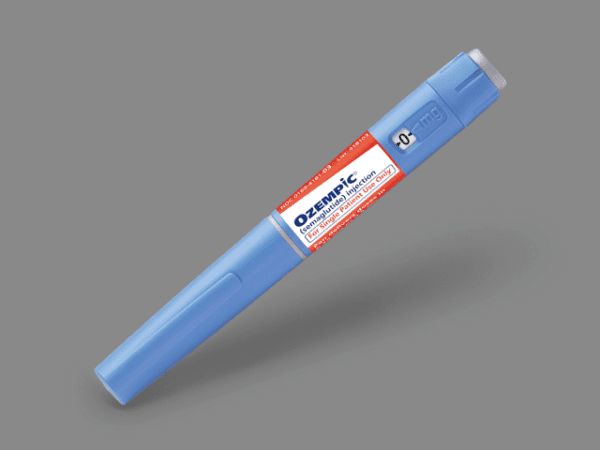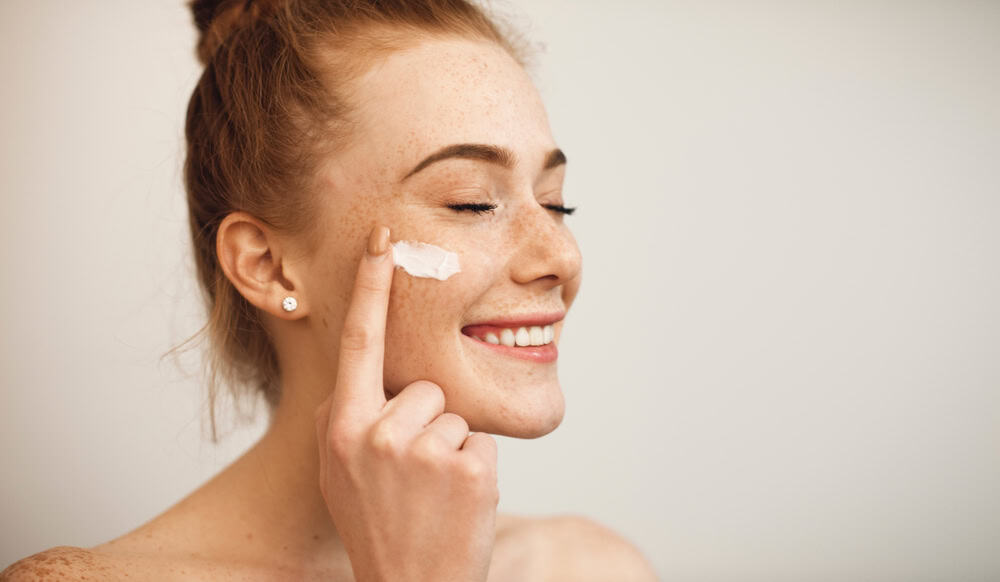Azelaic Acid Gel: A Comprehensive Guide
Transform your health journey with our top practitioners. Speak with a provider today to see what treatment is right for you.
- Appointments any day of the week
- Licensed healthcare providers in your state
- 24/7 patient support
Azelaic acid gel has emerged as a transformative solution in the world of skincare, primarily due to its dual-action ability to address both acne and uneven skin tone. As more people discover its benefits, it’s becoming a staple in many skincare routines. This guide aims to provide an in-depth look into azelaic acid gel, covering its origins, benefits, application, and comparison with other skincare treatments.
What is Azelaic Acid?
Azelaic acid is a naturally occurring compound that is derived from grains such as barley, wheat, and rye. It has been recognized for its potent anti-inflammatory and antibacterial properties, making it a highly sought-after ingredient in dermatology.
Natural Origins
Azelaic acid is found in nature, particularly in whole grains. Its natural origins make it a preferred choice for those seeking non-synthetic skincare options. The acid is a part of the dicarboxylic acid family, which plays a role in normalizing cell turnover and combating skin imperfections.
Skin Benefits
Known for its ability to reduce inflammation, azelaic acid is often used to treat skin conditions like acne and rosacea. It works by targeting the root causes of these issues, such as bacteria and excessive keratin production. Its antibacterial properties help to prevent further acne breakouts while calming existing inflammation.
Popularity in Skincare
The rise in popularity of azelaic acid in the skincare industry can be attributed to its versatility and gentleness. Unlike other harsh acne treatments, azelaic acid is suitable for various skin types, including sensitive skin. Its ability to tackle multiple skin concerns has made it a favored ingredient among dermatologists and skincare enthusiasts alike.
How Does Azelaic Acid Gel Work?
Azelaic acid gel is a concentrated formulation designed for topical application. It works by addressing the primary triggers of acne and skin discoloration, making it an effective and comprehensive treatment.
Mechanism of Action
The gel penetrates the skin to reduce the overproduction of keratin, a protein that can clog pores and lead to acne. By decreasing keratin levels, azelaic acid helps prevent the formation of new acne lesions. Additionally, it inhibits the growth of acne-causing bacteria, reducing the likelihood of future breakouts.
Anti-Inflammatory Properties
Azelaic acid’s anti-inflammatory effects play a crucial role in soothing irritated skin. This makes the gel particularly effective for reducing redness and swelling associated with acne and rosacea. The calming effect is beneficial for those with sensitive skin who are prone to irritation from other treatments.
Skin Tone Improvement
One of the standout benefits of azelaic acid gel is its ability to even out skin tone. It lightens hyperpigmentation and fades post-acne marks, resulting in a more uniform complexion. This is achieved by inhibiting the enzyme tyrosinase, which is involved in melanin production.
How to Use Azelaic Acid Gel
Proper application of azelaic acid gel is essential to maximize its benefits and minimize potential side effects. Here are detailed steps and tips to ensure effective use.
Step-by-Step Application
- Cleanse Your Skin: Begin with a gentle cleanser to remove impurities and prepare your skin for treatment. This step ensures that the gel can penetrate the skin effectively without interference from oils or dirt.
- Apply a Thin Layer: Dispense a pea-sized amount of the gel and gently spread it over the affected areas. Be cautious to avoid sensitive areas like the eyes and mouth.
- Moisturize: Follow the application with a non-comedogenic moisturizer to lock in hydration. This helps to prevent dryness and maintain the skin’s moisture barrier.
- Use Consistently: For best results, incorporate the gel into your daily skincare routine, applying it once or twice daily as recommended. Consistency is crucial for achieving noticeable improvements.
Tips for Best Results
- Patch Test: Always perform a patch test on a small area of skin before full application to ensure no adverse reactions occur.
- Sun Protection: Azelaic acid can increase sun sensitivity, so it’s important to apply a broad-spectrum sunscreen during the day to protect your skin.
- Avoid Irritating Products: While using the gel, steer clear of harsh exfoliants and other potential irritants to prevent compromising the skin barrier.
Incorporating into Skincare Routine
Integrating azelaic acid gel into your existing routine requires balancing with other products. Use it as a treatment step after cleansing and before moisturizing. If you’re using other active ingredients, such as retinoids or vitamin C, consider alternating their use to avoid potential irritation.
Who Can Benefit from Azelaic Acid Gel?
Azelaic acid gel is versatile and can benefit a wide range of individuals, particularly those with specific skin concerns like acne, rosacea, and sensitive skin.
Acne-Prone Skin
Individuals struggling with acne can find relief in azelaic acid gel’s ability to target the root causes of acne. Whether dealing with whiteheads, blackheads, or inflammatory acne, its antibacterial and anti-inflammatory properties make it an effective solution.
Rosacea and Redness
For those with rosacea, azelaic acid gel offers a gentle approach to managing symptoms. It reduces the redness and bumps associated with rosacea, providing a soothing effect without the harshness of other treatments.
Sensitive Skin
People with sensitive skin often find other acne treatments too irritating. Azelaic acid gel is mild yet effective, providing the benefits of acne treatment with minimal risk of irritation. Its gentle nature makes it a suitable option for those who have reacted negatively to other treatments.
Potential Side Effects
While azelaic acid gel is generally well-tolerated, some users may experience mild side effects. Understanding these can help you manage and mitigate them effectively.
Common Side Effects
- Itching or Burning Sensation: Some individuals may experience a mild itching or burning sensation upon application. This is typically temporary and subsides as the skin adjusts.
- Dryness or Peeling: The gel can cause dryness or peeling, especially during the initial use. Incorporating a good moisturizer can help alleviate this.
- Redness or Irritation: Mild redness or irritation may occur, particularly in those with very sensitive skin. Reducing the frequency of application can help manage this.
Managing Side Effects
To minimize side effects, start with a lower concentration of azelaic acid and gradually increase as your skin builds tolerance. Moisturizing regularly and avoiding other irritating products can also help.
When to Seek Medical Advice
If you experience severe side effects or signs of an allergic reaction, such as swelling or difficulty breathing, discontinue use immediately and seek medical attention. Consulting with a dermatologist before starting any new treatment is always recommended to ensure it’s appropriate for your skin type and condition.
Comparing Azelaic Acid Gel to Other Acne Treatments
Understanding how azelaic acid gel compares to other acne treatments can help you make an informed decision about which option is best for your skin.
Benzoyl Peroxide
Benzoyl peroxide is a widely used acne treatment known for its strong antibacterial properties. However, it can be more irritating than azelaic acid, causing dryness and peeling. It’s particularly effective for inflammatory acne but may not be ideal for those with sensitive skin.
Get your anxiety symptoms checked by online healthcare providers at MEDvidi from the comfort of your home.
Salicylic Acid
Salicylic acid is effective at treating blackheads and whiteheads by exfoliating the skin and unclogging pores. While effective, it can cause dryness and irritation, particularly in those with sensitive skin. Azelaic acid gel offers a gentler alternative with additional benefits for skin tone.
Get professional help for anxiety from the comfort of your home.
Retinoids
Retinoids promote cell turnover and are highly effective for acne treatment. However, they often come with a risk of irritation and increased sun sensitivity. Azelaic acid gel provides a balanced approach, offering both antibacterial and anti-inflammatory benefits with a lower risk of irritation, making it suitable for a broader range of skin types.
See a healthcare provider licensed in your state to get personalized anxiety treatment.
Conclusion
Azelaic acid gel stands out as a versatile and effective treatment for acne and other skin conditions. Its gentle nature and multifaceted benefits make it suitable for a wide range of skin types, including sensitive and acne-prone skin. By incorporating azelaic acid gel into your skincare routine, you can work towards achieving clearer, more even-toned skin. Consistency, sun protection, and mindful integration with other skincare products are key to maximizing its benefits. If you have any concerns or specific skin conditions, consulting a dermatologist can provide personalized guidance and ensure that azelaic acid gel is the right choice for your skincare needs.
With this comprehensive guide, you’re well-equipped to make an informed decision about incorporating azelaic acid gel into your skincare regimen.

Take the first step today:
book an appointment to get your symptoms assessed and obtain a prescription online.



